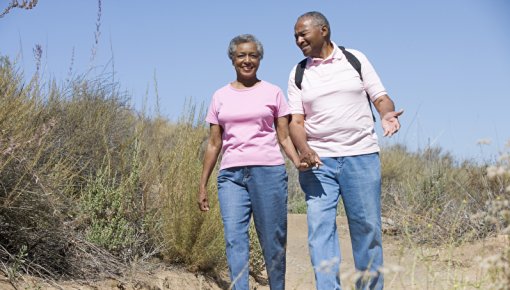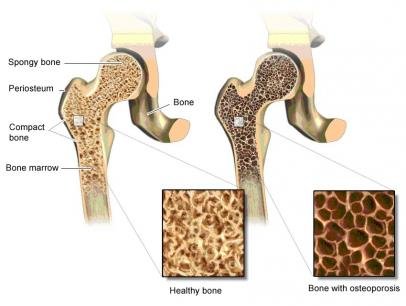Avenell A, Mak JC, O'Connell D. Vitamin D and vitamin D analogues for preventing fractures in post-menopausal women and older men. Cochrane Database Syst Rev 2014; (4): CD000227.
Bartholomeyczik S. Prevention of malnutrition in institutional long-term care with the DNQP "nutrition management" expert standard. Bundesgesundheitsblatt Gesundheitsforschung Gesundheitsschutz 2019; 62(3): 304-310.
Bässgen K, Westphal T, Haar P et al. Population-based prospective study on the incidence of osteoporosis-associated fractures in a German population of 200,413 inhabitants. J Public Health (Oxf) 2013; 35(2): 255-261.
Buchbinder R, Johnston RV, Rischin KJ et al. Percutaneous vertebroplasty for osteoporotic vertebral compression fracture. Cochrane Database Syst Rev 2018; (4): CD006349.
Bundesinstitut für Risikobewertung (BfR), Deutsche Gesellschaft für Ernährung (DGE), Max Rubner-Institut (MRI). Ausgewählte Fragen und Antworten zu Vitamin D. 2014.
Dachverband der Deutschsprachigen Wissenschaftlichen Osteologischen Gesellschaften (DGO). Prophylaxe, Diagnostik und Therapie der Osteoporose bei postmenopausalen Frauen und bei Männern. AWMF-Registernr.: 183-001. 2017.
Dautzenberg L, Beglinger S, Tsokani S et al. Interventions for preventing falls and fall-related fractures in community-dwelling older adults: A systematic review and network meta-analysis. J Am Geriatr Soc 2021; 69(10): 2973-2984.
Ensrud KE, Schousboe JT. Clinical practice. Vertebral fractures. N Engl J Med 2011; 364(17): 1634-1642.
European Network for Health Technology Assessment (EUnetHTA). Screening for osteoporosis in the general population. (EUnetHTA Joint Action 3 WP4). 2019.
Firanescu CE, de Vries J, Lodder P et al. Vertebroplasty versus sham procedure for painful acute osteoporotic vertebral compression fractures (VERTOS IV): randomised sham controlled clinical trial. BMJ 2018; 361: k1551.
Fuchs J, Rabenberg M, Scheidt-Nave C. Prevalence of selected musculoskeletal conditions in Germany: results of the German Health Interview and Examination Survey for Adults (DEGS1). Bundesgesundheitsbl Gesundheitsforschung Gesundheitsschutz 2013; 56(5-6): 678-686.
Grossman DC, Curry SJ, Owens DK et al. Vitamin D, Calcium, or Combined Supplementation for the Primary Prevention of Fractures in Community-Dwelling Adults: US Preventive Services Task Force Recommendation Statement. JAMA 2018; 319(15): 1592-1599.
Hadji P, Schweikert B, Kloppmann E et al. Osteoporotic fractures and subsequent fractures: imminent fracture risk from an analysis of German real-world claims data. Arch Gynecol Obstet 2021; 304(3): 703-712.
Institute for Quality and Efficiency in Health Care (IQWiG). Osteodensitometry in primary and secondary osteoporosis. Final report; Commission D07-01. October 11, 2010.
Iuliano S, Poon S, Robbins J et al. Effect of dietary sources of calcium and protein on hip fractures and falls in older adults in residential care: cluster randomised controlled trial. BMJ 2021; 375: n2364.
Järvinen TL, Michaëlsson K, Jokihaara J et al. Overdiagnosis of bone fragility in the quest to prevent hip fracture. BMJ 2015; 350: h2088.
Kahwati LC, Weber RP, Pan H et al. Vitamin D, Calcium, or Combined Supplementation for the Primary Prevention of Fractures in Community-Dwelling Adults: Evidence Report and Systematic Review for the US Preventive Services Task Force. JAMA 2018; 319(15): 1600-1612.
Merlijn T, Swart KM, van der Horst HE et al. Fracture prevention by screening for high fracture risk: a systematic review and meta-analysis. Osteoporos Int 2020; 31(2): 251-257.
Qaseem A, Forciea MA, McLean RM et al. Treatment of Low Bone Density or Osteoporosis to Prevent Fractures in Men and Women: A Clinical Practice Guideline Update From the American College of Physicians. Ann Intern Med 2017; 166(11): 818-839.
Reid IR, Bolland MJ. Calcium and/or Vitamin D Supplementation for the Prevention of Fragility Fractures: Who Needs It? Nutrients 2020; 12(4): 2011.
Schmidt CO, Günther KP, Goronzy J et al. Frequencies of musculoskeletal symptoms and disorders in the population-based German National Cohort (GNC). Bundesgesundheitsbl Gesundheitsforsch Gesundheitsschutz 2020; 63(4): 415-425.
Stone KL, Seeley DG, Lui LY et al. BMD at multiple sites and risk of fracture of multiple types: long-term results from the Study of Osteoporotic Fractures. J Bone Miner Res 2003; 18(11): 1947-1954.
Zhao JG, Zeng XT, Wang J et al. Association Between Calcium or Vitamin D Supplementation and Fracture Incidence in Community-Dwelling Older Adults: A Systematic Review and Meta-analysis. JAMA 2017; 318(24): 2466-2482.
IQWiG health information is written with the aim of helping people understand the advantages and disadvantages of the main treatment options and health care services.
Because IQWiG is a German institute, some of the information provided here is specific to the German health care system. The suitability of any of the described options in an individual case can be determined by talking to a doctor. informedhealth.org can provide support for talks with doctors and other medical professionals, but cannot replace them. We do not offer individual consultations.
Our information is based on the results of good-quality studies. It is written by a team of health care professionals, scientists and editors, and reviewed by external experts. You can find a detailed description of how our health information is produced and updated in our methods.


